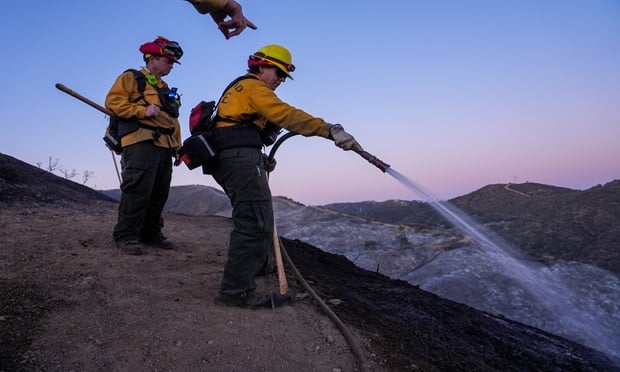WC Buyers Caught Between A Rock And A Hard Place
Due to terrorism concerns, risk managers whose companies have large concentrations of employees and those in urban areas are finding that workers' compensation coverage, if they can get it at all, involves "exorbitant" rates, according to a Standard & Poor's study.
Making the situation even worse for many big employers is the fact that going to surplus lines carriers is not an available option, said Fred Sklow, director of insurance ratings for S&P in New York.
Mr. Sklow said that regulators require that employers get their coverage with insurers admitted to operate within their states, which have the backing of their state guaranty funds.
S&P made inquiries to five states concerning the use of surplus lines, non-admitted insurers for workers comp coverage. Mr. Sklow related that the response "across-the-board was, No, you have to stick with the admitted market."
S&P also noted that, unlike other types of coverage, workers comp insurers are not permitted to exclude losses caused by terrorism in their underwriting contracts. Workers' comp writers are therefore trapped between ongoing exposure to potentially devastating payouts, on the one hand, and the removal of their own protection against losses to terrorism through reinsurance, on the other. That safeguard lapsed with the Jan. 1, 2002, renewal period for reinsurance contracts, S&P pointed out.
S&P reported that since last Septembers attack on the World Trade Center, premium increases have ranged from 30-to-50 percent, while those who suffered terrorism losses are being hit with rate hikes from 50-to-100 percent.
Don Watson, director of S&Ps financial services ratings, said the coverage that employers need might be provided by new startup companies in Bermuda that "have an appetite for workers comp." With $7 billion in capital on hand, they are looking for business, he said. In the S&P report, he noted that Bermuda firms are unencumbered by poor underwriting experience from previous years, and are getting "an incredible price" for providing coverage.
"If you avoid the supertrophy buildings like the Sears Tower or the Empire State Building, maybe its not such a bad risk," he speculated in the analysis.
For many employers with 1,000 or more employees, he said, the policies they obtain will include deductibles that "are going to be huge." Many employers might decide to self-insure, he added.
Mr. Watson said the problem is not just for urban employers, but also for major suburban firms, where insurers calculate they will still be vulnerable to nuclear, biological or chemical attacks.
Both Mr. Watson and Mr. Sklow noted that the new element in workers comp pricing is a realization of the high losses that can be sustained with high concentration of employees in job categories with a low risk factor.
The concentration factor, Mr. Sklow said, is one with which underwriters and actuaries must now grapple. S&Ps analysis said the insurer reaction will probably be an avoidance of concentrated risk in any one geographic area.
Mr. Watson said the potential for a big concentration loss from events such as an earthquake has always been present, but that insurers had ignored it. For example, Californias Northridge earthquake in 1994 could have caused major death and injury to workers, he suggested, but it luckily occurred in the early hours of the morning when people were not at their job sites.
S&Ps study noted that monoline insurers that specialize in workers comp and those that write in only one state are at greatest risk from the increasing threat of terrorism.
In the past, Mr. Sklow noted, most workers' comp pricing decisions depended on the insured company's payroll, the type of industry, the workers' job functions, the head count, and historical experience for the company. Now geographic location and concentration of workers are also major factors.
S&P said that in the long-term, prudent risk management should make workers comp a profitable insurance line. The analysts also forecast that the current surge of premium increases will probably not continue into next year, because prices will be cut as competition for business arises.
Reproduced from National Underwriter Property & Casualty/Risk & Benefits Management Edition, February 4, 2002. Copyright 2002 by The National Underwriter Company in the serial publication. All rights reserved.Copyright in this article as an independent work may be held by the author.
Want to continue reading?
Become a Free PropertyCasualty360 Digital Reader
Your access to unlimited PropertyCasualty360 content isn’t changing.
Once you are an ALM digital member, you’ll receive:
- Breaking insurance news and analysis, on-site and via our newsletters and custom alerts
- Weekly Insurance Speak podcast featuring exclusive interviews with industry leaders
- Educational webcasts, white papers, and ebooks from industry thought leaders
- Critical converage of the employee benefits and financial advisory markets on our other ALM sites, BenefitsPRO and ThinkAdvisor
Already have an account? Sign In Now
© 2025 ALM Global, LLC, All Rights Reserved. Request academic re-use from www.copyright.com. All other uses, submit a request to [email protected]. For more information visit Asset & Logo Licensing.








